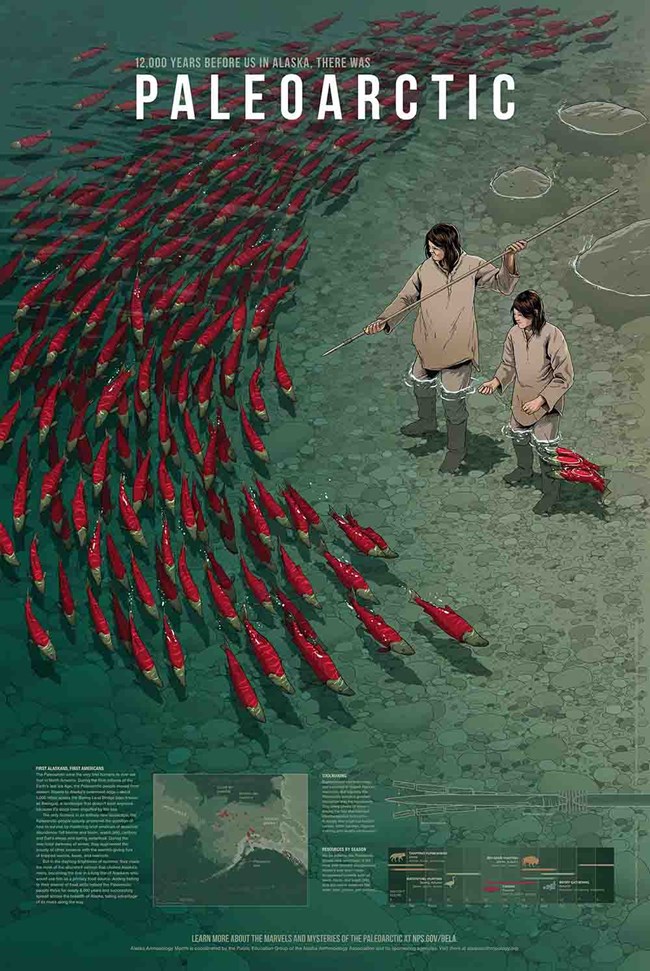Last updated: April 1, 2019
Article
Alaska Archaeology Month Poster - 2017

Paleoarctic Tradition
The Paleoarctic Tradition represents the first settlers of Alaska, 7,000 to 14,000 years ago. These people made a living hunting, trapping and fishing a smorgasbord of resources that included now-extinct species such as bison, wapiti (elk), and horse, along with extant species that include caribou, Dall’s sheep, waterfowl, small game, and fish. Recent archaeological finds show that Paleoarctic people had begun to exploit salmon, which in later millennia would become a major staple of Alaskan subsistence economies.
About Archaeology Month Posters
The archaeological heritage of 42 states is celebrated each year during their respective archaeology months or weeks. April is Archaeology Month in Alaska, by proclamation of the governor. Educational posters are produced by each state to promote awareness of the value of archaeology and archaeological resources. Posters are sent to schools, libraries, agencies, and institutions throughout the state.
Production of the annual Alaska Archaeology Month poster is coordinated by the Alaska Anthropological Association’s Public Education Group. Sponsors include the National Park Service, Ukpeaġvik Iñupiat Corporation, Colorado State University Center for Environmental Management of Military Lands, Bureau of Ocean Energy Management, Bureau of Land Management, University of Alaska Anchorage Department of Anthropology, the Alaska Office of History and Archaeology, and the Matanuska-Susitna Borough Cultural Resources Division.
